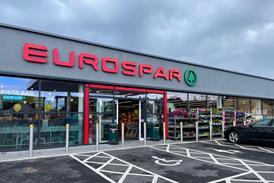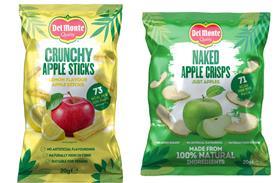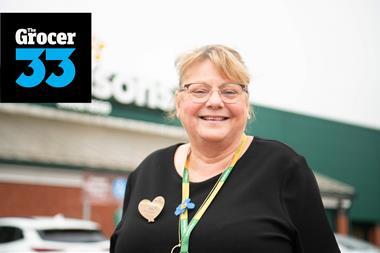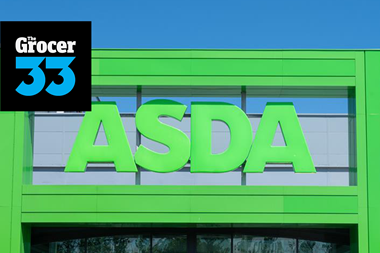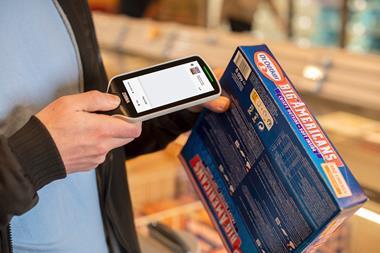With consumer spending still under pressure, pricing must work harder than ever before – used as a strategic lever to align with demand rather than a blunt tool. In this latest instalment in our series on how brands and retailers can drive sustainable growth in 2025, we explore how rethinking price can unlock value in surprising ways.
Setting the right price can feel like walking a tightrope for brands in 2025.
On the one hand, steep inflation has driven up cost bases, eating into margins and forcing a rethink of what consumers (and customers) will pay.
At the same time, those consumers – also weighed down by a cost-of-living crisis – have less money to spend and, crucially, less willingness to part with it.
“They’ve become savvy in terms of understanding what’s true value for money,” says Shashank Dewan, partner in growth strategy at KPMG UK. “So even if I want to buy something, there’s a mental blockage. Is it too expensive? Can I get it cheaper? Is there a promotion somewhere else? There can even be a range of prices available on the same product, leaving consumers to think, Should I buy it today or wait until tomorrow?.”
The majority of brands and retailers have responded to higher input costs by either raising average price or deploying controversial tactics like ‘shrinkflation’.
But what if charging more (or offering less) isn’t the only way to unlock growth from price?
Aligning price to mission
Against this challenging backdrop, more agile, demand-based dynamic pricing approaches are a solid strategy, Dewan believes. “But dynamism doesn’t only mean making things more expensive. It’s figuring out what the consumer pulse is and then trying to set prices accordingly.”
“That means aligning prices to shopper missions,” he argues. Each occasion comes with a different value for the consumer. For example, a weekly grocery shop might be focused on price and quality, but in a restaurant that’s superseded by experience and for an on-the-go mission convenience. In the latter two, pricing becomes secondary.
Read more in the series:
Risk vs reward: how to grow without the gamble in 2025
Curiosity, culture, quality: how brands and retailers can win with data
Portfolios aligned to different missions therefore allow brands some breathing space when it comes to pricing by reflecting what consumers value at any given moment. “Take Heinz ketchup,” says Dewan. From 8g plastic sachets in cafes, to 64g glass pots delivered on hotel breakfast trays to 1.35kg squeezy bottles for families, the brand has a portfolio of SKUs designed to meet different occasions for its signature table sauce – and a pricing architecture to boot, with each SKU a slightly different price per gram.
“The more differentiation I do on my pack, the more I can align my prices to those different shopper occasions,” explains Dewan. Brands may realise that for some occasions the numbers don’t add up and the cost-to-serve is too high, but the end result is still a pricing model with far more potential dynamism (and breathing space) baked in.

Build an appetite for little luxuries
”At contemporary players such as Grind Coffee, with a portfolio that spans monthly subscriptions and coffee bundles via its D2C platform, as well as speciality ground coffee and ready-to-drink offerings sold in supermarkets, this occasion-led model has long informed its pricing strategy,” says B2B director Annie Mitchell. “We know that each coffee category delivers on a different drinking occasion or purpose,” she explains.
“For example, instant coffee is about practicality, but ready-to-drink is all about the drinker. We also know there’s a different cost expectation for a coffee one receives in a cafe, which has been handcrafted by a trained barista on high-grade equipment, versus what you will pay to make it yourself at home,” she notes. ”There’s also a difference in customer types between someone who grinds their own coffee beans at home for an espresso versus someone using a pod machine or someone who buys it ready-to-drink. We try to create value in each category that best delivers for the customer and brew type,” she adds.
“When costs bite, a more strategic, occasion-led portfolio leaves brands with far more options when it comes to unlocking growth via pricing.”
Shashank Dewan, partner in growth strategy at KPMG UK
At one dairy brand, meanwhile, the decision to add a food-to-go variant of its core product “in a packaging format that was more convenient, easy-to-use and had more emotional cues around quality prompted a boost in purchase intent and in consumers’ willingness to pay 60%-70% more,” says Bill Harte, founder of innovation consultants Creating Possibilities and former commercial project manager at Diageo.
Read more in the series:
-
How brands and retailers can win with data
-
Why it’s time brands and retailers rethink how they use AI
-
Reconsidering responsibility for cybersecurity in retail
”When costs bite, this more strategic, occasion-led portfolio leaves brands with far more options when it comes to unlocking growth via pricing,” says Dewan. They may opt to keep prices on their core range stable, for example, but offset that via more premium SKUs. “It’s all about how you deliver that differentiation so that when cost increases come in, you’ve got this portfolio of premium products to help you manage any profit dilution on your core.”
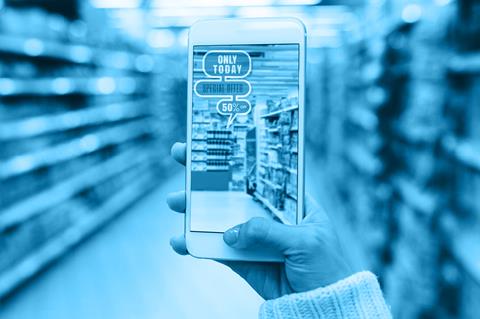
Creating pricing strategies that speak to retail customers
A more dynamic pricing model also equips brands with the type of macro view they need heading into tough negotiations with retail customers.
“Too often, brands adopt an overly narrow cost-led view when asking buyers to push prices up,” believes Harte. “Financers say, ‘you need to grow profit by 20%, our costs have gone up by 10% and so we need to get more margin’, and sales will be given a target,” he says.
But that way of thinking misses the mark with retail teams. “While brands are product-focused, retailers are focused on category growth,” says Dewan. “They’re focused on making it more affordable for shoppers to come in and buy as much as they can.”
A more effective strategy, Dewan says, is ‘value stories’ – an insight-led plan for pricing across a range that demonstrates an understanding of price elasticity across different occasions and formats, and how these can be used to unlock growth across the category.
“Brands that lead with a more differentiated, data-driven approach to their own pricing architecture will be in far better position to act as complementary partners.”
This rings true with Ben Daniels, managing director at confectionery brand Ritter Sport, which, faced with the volatility in cocoa prices, decided to roll out price increases in both 2023 and 2024. “We invest very significantly in category insight, and it would not be possible to work effectively with our trade partners were that not to be the case, especially with such significant inflation in the market,” he says. “Just like the rest of the market, we had to raise prices as increases were so acute, but that was done with very clear, very open communication with our trade partners focused on delivering incremental category value to them.”
As part of their own efforts to better pin pricing to the consumer-pulse, retailers are already poised to use their own customer data to move towards ever more personalised, dynamic prices in the future.
Not only are an increasing number of electronic shelf labels (ESLs) appearing on shelves, designed to adapt to price, weather and local events but the loyalty apps are being used to unlock rich insights on individual shopper buying behaviours, creating opportunities to tailor pricing to micro-segments. Brands that lead with a more differentiated, data-driven approach to their own pricing architecture will be in far better position to act as complementary partners in that process.
Unlock growth via canny pricing
Toying with prices in 2025 can feel precarious even for the most established of consumer goods brands.
Consumers might have (a little) more money in their pocket, but they’re also savvier than they’ve ever been, more attuned to what constitutes genuine value and what could be swapped out for a cheaper alternative.
For brands, that requires a pricing model that starts with a firm grasp of their consumers, and what, when and how to add value across their portfolio, rather than decisions based solely on their bottom line.
To learn more about how KPMG’s experts can help your business, visit: KPMG Consumer
Or contact:
Linda Ellett, partner, head of consumer, retail and leisure: Linda.Ellett@kpmg.co.uk, or
Shashank Dewan, partner in growth strategy: Shashank.Dewan@kpmg.co.uk
Risk vs reward: how brands and retailers can grow without the gamble in 2025
- 1
- 2
- 3
- 4
- 5


